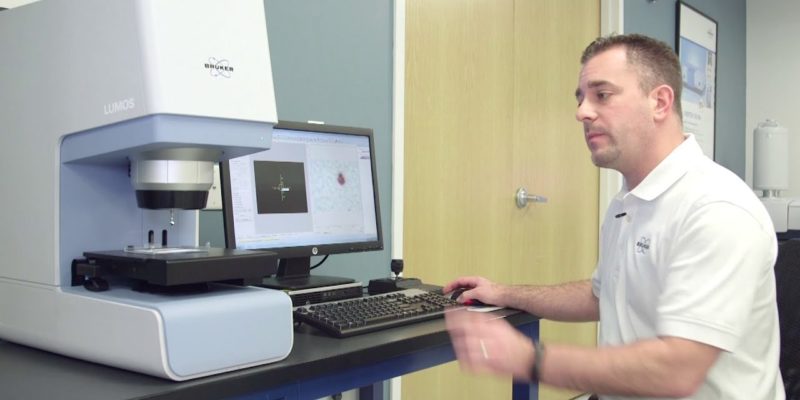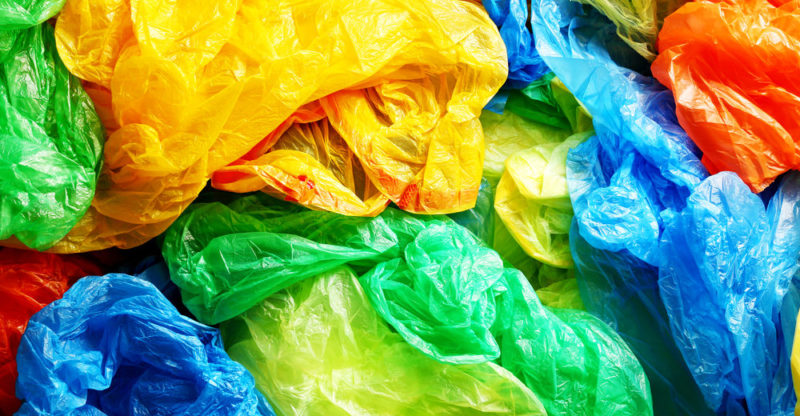We explain what polymers are, how they are classified and the structure they present. Also, what are its features and applications.
What are polymers?
Polymers are called a set of usually organic macromolecules , which result from the union of simpler molecules called monomers through chemical bonds of the covalent type . Long molecular structures are formed linked together by different forces ( hydrogen bonds , Van der Waals forces or hydrophobic interactions).
Polymers can be of natural or synthetic origin , but they are always the result of a process called polymerization, in which phenomena such as temperature , reaction time or the nature of the monomers determine the length of the resulting polymer chain.
These complex structures are vital for the evolution of complex living things (the DNA molecule is a polymer), as well as highly versatile organic industrial substances such as plastic and other petroleum derivatives .
Polymer characteristics

Chemical characteristics
Polymers usually have the reactivity of the molecules that make up the monomers at the ends of the chains. Synthetic polymers are not very reactive , although the presence of acids and organic solvents tends to corrode them quickly.
Physical characteristics
- They tend to be poor conductors of electricity , which is why they are often used as insulators . It is also frequent that they present electrochromism (change of color before electricity) and in some cases phosphorescence or fluorescence.
- Polymers are usually crystalline in cases of more ordered structures, although their presentation can be very varied. At low temperatures they can acquire more hardness and vitreous properties, while at high temperatures they are more elastic until reaching their melting temperature (Tf) at which their cells melt. Much higher is the decomposition temperature, in which the bonds between monomers are broken.
- In general terms, the most interesting thing about polymers are their mechanical properties: viscoelasticity, elasticity, plastic flow and fracture , which make them ideal materials for many industrial activities.
Origin of polymers

The word polymers comes from the union of two Greek words: polys ("many") and meros ("parts, segments") , and they were named that way for the first time in 1866 by Marcellin Berthelot.
Many of the materials used by humanity since ancient times are polymers, such as wood , wool or silk, and from their modification it was possible to obtain more resistant and useful forms .
The first fully synthetic polymer was obtained in 1907, when the Dutchman Leo Hendrik Baekeland developed Bakelite from phenol and formaldehyde.
However, the formal study of polymers began in 1922 , when the German Hermann Staudinger determined (1926) that they were long molecular chains and began the process of their nomenclature and understanding, laying the foundations for macromolecular science . The latter would take a definitive thrust after the Second World War and from the second half of the 20th century a true revolution in synthetic polymers would arrive.
Polymer nomenclature
Beyond the established IUPAC standards for naming chemicals, polymers are often named taking the name of the base monomer for their conformation, preceded by the prefix poly (“many”). For example: polystyrene, polyethylene, etc.
Another common way is to add the word "rubber", "rubber" or "acrylic" before the name of the copolymers. For example: styrene-butadiene rubber, phenol-formaldehyde resin.
Finally, there are some polymers endowed with their own names , usually derived from the brands that sold them, such as nylon (polyamide), Teflon (polytetrafluoroethylene) or neoprene (polychloroprene).
Polymer types

Depending on their origin, polymers can be:
- Natural polymers . They are of natural origin, coming from nature. For example: nucleic acids or proteins .
- Semi-synthetic polymers . They are obtained from the transformation of natural polymers. For example: nitrocellulose.
- Synthetic polymers . They are obtained industrially by handling organic monomers. For example: nylon or polyvinyl chloride (PVC).
- Organic polymers . They are those whose main chain of molecules is composed primarily of carbon (C).
- Vinyl organic polymers . They only have carbon atoms in their main chain, although they can also contain halogens and styrenes in their structure.
- Non-vinyl organic polymers . They have oxygen (O) and nitrogen (N) in their main chain as well as carbon atoms.
- Inorganic polymers . They can be based on sulfur (S) or silicon (Si).
Depending on their structure, polymers can be:
- Homopolymers . They are composed of the same type of molecule that repeats itself.
- Copolymers . They are composed of two or more types of molecules that are successively repeated in the chain.
- Straight chain polymers . They are made up of long chains of monomers in a straight line.
- Radial polymers . They are made up of circular structures.
- Branched polymers . They are made up of divergent chains of polymers, like the branches of a tree.
Polymerization
The process of construction of polymers is polymerization and consists of the union by covalent bonds of the different monomers that comprise it. This process can be of two types:
- By condensation . It results in copolymers and homopolymers, through the loss of a small molecule (of water, for example) at each monomer junction. It is also known as stage polymerization.
- By addition . It occurs in a three-phase process: initiation, propagation, and termination, during which a homolytic breakdown occurs and monomers come together. No low molecular mass molecules are released.
Polymer defects
 Industrial polymers often have defects, which have to do with the inhomogeneous distribution of their monomers , or contamination of the chain with elements foreign to the substance. Such defects are usually not visible to the naked eye and require examination by LUMOS microscopes .
Industrial polymers often have defects, which have to do with the inhomogeneous distribution of their monomers , or contamination of the chain with elements foreign to the substance. Such defects are usually not visible to the naked eye and require examination by LUMOS microscopes .
Polymer applications
 Polymers are extremely versatile. Their resistance to electrical conduction have made them ideal for coatings and insulators . Some, with a very high melting point, are also used to thermally insulate kitchen utensils. In other cases, they are ideal building materials for coatings and waterproofing, or as a structural material.
Polymers are extremely versatile. Their resistance to electrical conduction have made them ideal for coatings and insulators . Some, with a very high melting point, are also used to thermally insulate kitchen utensils. In other cases, they are ideal building materials for coatings and waterproofing, or as a structural material.Many petroleum-derived polymers are the raw material for making plastics of all kinds and functions, from containers, tools, parts, toys, etc.
Polymer Examples
Polymers are extremely abundant in the world. Some acquaintances are:
- Celulosa . It is the biopolymer from which wood and paper are made .
- DNA . It is the deoxyribonucleic acid present in the nucleus of our cells is a good example of a natural polymer.
- The PCV . Polyvinyl chloride is obtained by polymerizing vinyl chloride and is one of the most versatile plastic derivatives that exist.
- Starch . It is a white, odorless and tasteless substance, composed of two types of sugars . It is used by plants as an energy reserve material.
- Nylon . Known as nylon or nylon, it is a polyamide used in the manufacture of traditional female stockings as well as for ropes, parachutes and thousands of other textile inputs.
- Bakelite . It is the first synthetic plastic substance. It is used in the industrial production of casings for electrical appliances, kitchen utensils and mouthpieces for traditional wine casks.
The above content published at Collaborative Research Group is for informational and educational purposes only and has been developed by referring reliable sources and recommendations from experts. We do not have any contact with official entities nor do we intend to replace the information that they emit.
Passionate about understanding and contributing to a world that does not stop changing. New forms of Work, Sustainability and Technology. For many years he has worked as a creative for large international companies. He has a Ph.D. in information technology and he has been doing quantitative research in the interdisciplinary areas of information systems, cyber security, data analytics and artificial intelligence. He continue to look for creative solutions through technology to help companies to be more humane and sustainable..
Leave a reply
Your email address will not be published. Required fields are marked *Recent post

Sport: What Is It, Types, Risks, Features, Characteristics and Examples

Dogs: Emergence, Features, Characteristics, Feeding and Breeds

Story: Definition, Elements, Structure, Features and Characteristics

